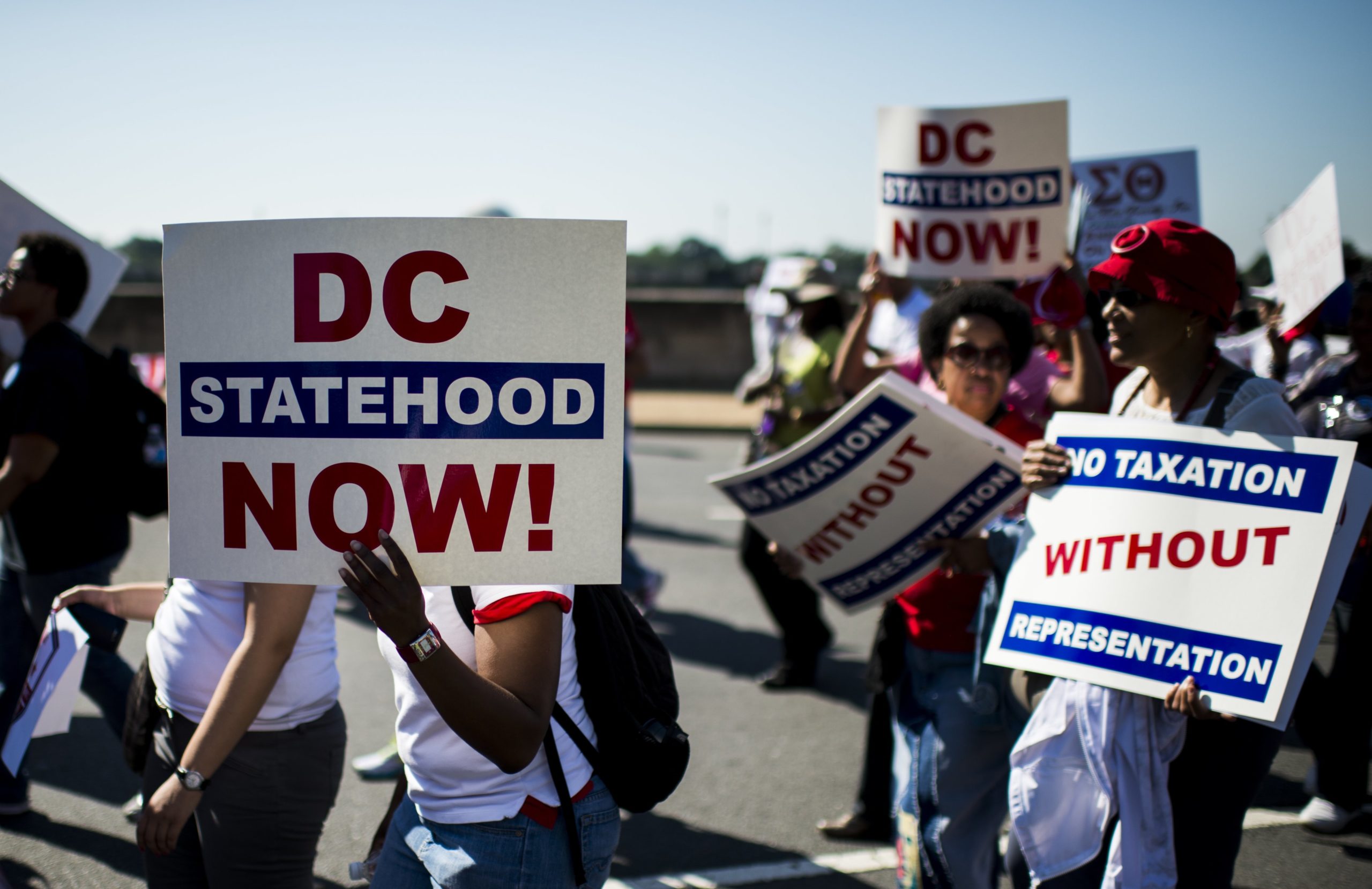To Gain Statehood, must DC wait until it’s predominately white? People earnestly and frequently ask me this question, as we watch the percentage of the black population in the city dip below 50%. My answer: Maybe. Maybe not. I equivocate because I believe that changes in the District’s governance structure occur when the existing model makes the city ungovernable. I base this on my reading to the history of the District of Columbia.
City-level “ungovernability” and national and international “ungovernability” are linked as well. But more on that in another post.
One of those “moments of ungovernability” exists today due to the harmful effects of policing as we have watched the lynching of George Floyd on our tv, computer, and other screens, and the occupation of DC the military and other “police forces,”
Just as we got to see in “real-time,” the plight of Floyd, the country has an up-close view of what the lack of Statehood means for DC residents.
In a presentation in 1987 (MOOD AND MEMORY: Historical Lessons for Today’s Urban Managers in Washington, D.C), I had listed the District’s seven forms of governance since 1790.
| Forms of Governance | Periods | No. Years | |
| 1 | Commissioner System | 1790-1802 | 12 |
| 2 | Elected Council and Appointed Mayor | 1802-1820 | 18 |
| 3 | Elected Mayor and Elected Council (Virginia Section retroceded in 1846) |
1820-1871 | 51 |
| 4 | Appointed Governor and Elected House of Delegates | 1871-1874 | 3 |
| 5 | Commissioner System | 1874-1967 | 93 |
| 6 | Appointed Mayor and Council | 1967-1974 | 7 |
| 7 | Elected Mayor and Council | 1974 -1987 | 13 |
In 1987, the District was 197 years old.
I had noted that by 1848, the interaction of seven significant drivers has led to change in the District’s governmental structures. These interactions appear at each of the shifts in the forms of governance for the Nation’s Capital.
| Drivers of Changes in Governance Structures | |
| 1 | Administrative efficiency |
| 2 | Social control |
| 3 | The responsibility of the national government to contribute to the upkeep of the District |
| 4 | Political responsiveness and representation |
| 5 | Protection of economic interests |
| 6 | Race |
| 7 | The form of the government of Washington as a focus of national ideological debates. |
My presentation laid out my argument.
In 2020, the elected mayor and council system is 48 years old.
For ten of those years (1995-2005), we had a Financial Control Board. The District, like many cities, had experienced a “fiscal crisis.”
Today, when police reform activists raise the question as to whether we need “police” at all, large numbers of people are questioning the whole legitimacy of our local, state, and national governments.
What we see in the city in protest-after-protest is that “to serve and protect” is not the motivating force.
We see “domination and control.” And not just in our policing, but in all aspects of our lives.
We recognize that what’s happening in policing is appearing in health care, housing, education, and employment.
We are watching in real-time what racism and implicit bias look like and how they operate.
The COVID-19 pandemic and the murder of Floyd has put in bold relief that “the system” fails to work for most folks.
Yes, “race” is an essential factor. At times it’s a “necessary condition;” at other times, a “sufficient one.”
However, Statehood is not inevitable, regardless of the city’s racial composition. “To Seize Statehood Now” requires a multi-racial struggle.
We are “Statehood Ready” because (i) Statehood is our natural political right, (ii) we have made our case, and (iii) we are frustrated with the current structure of governance.
Furthermore, the District will become ungovernable if we don’t get Statehood, now.

